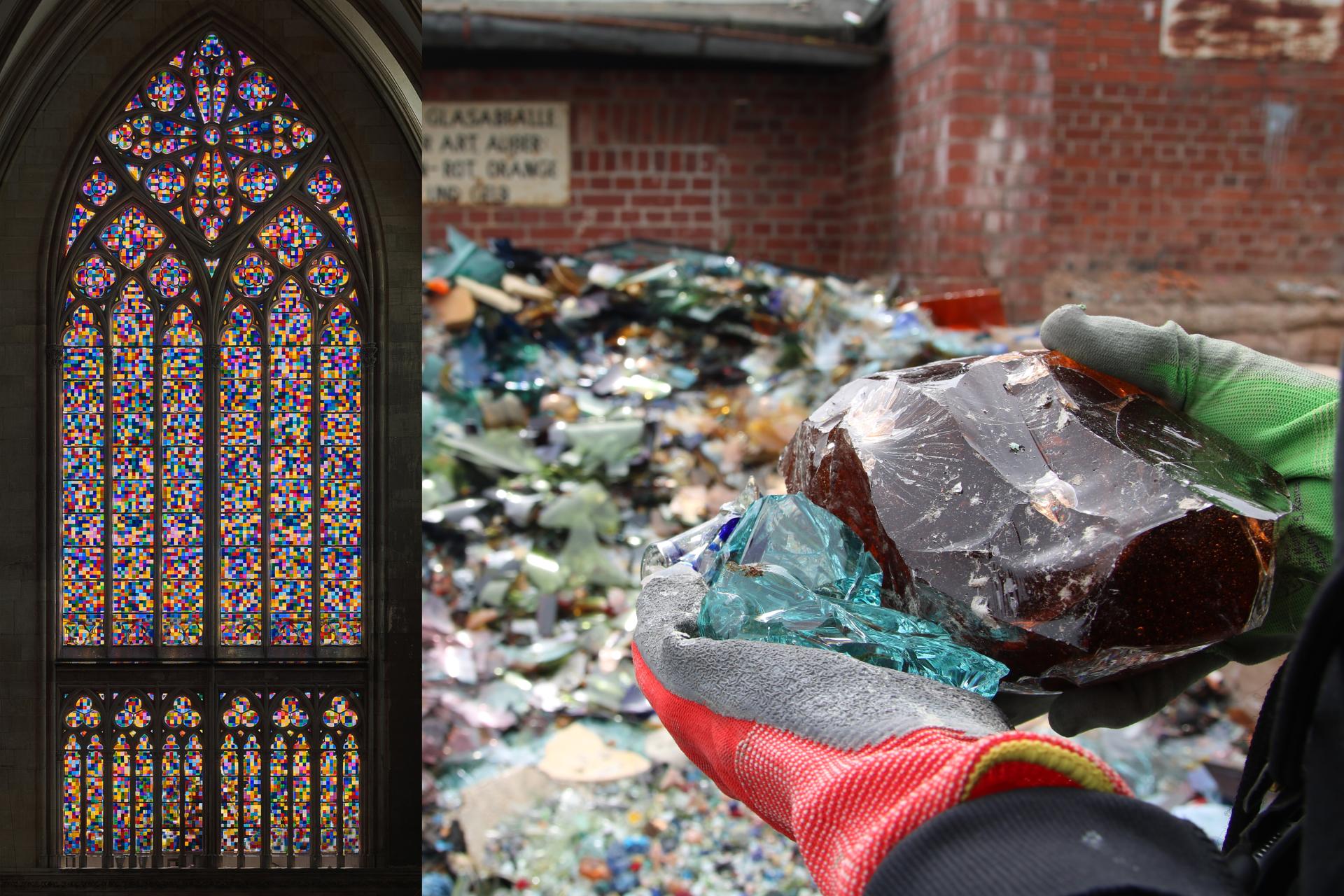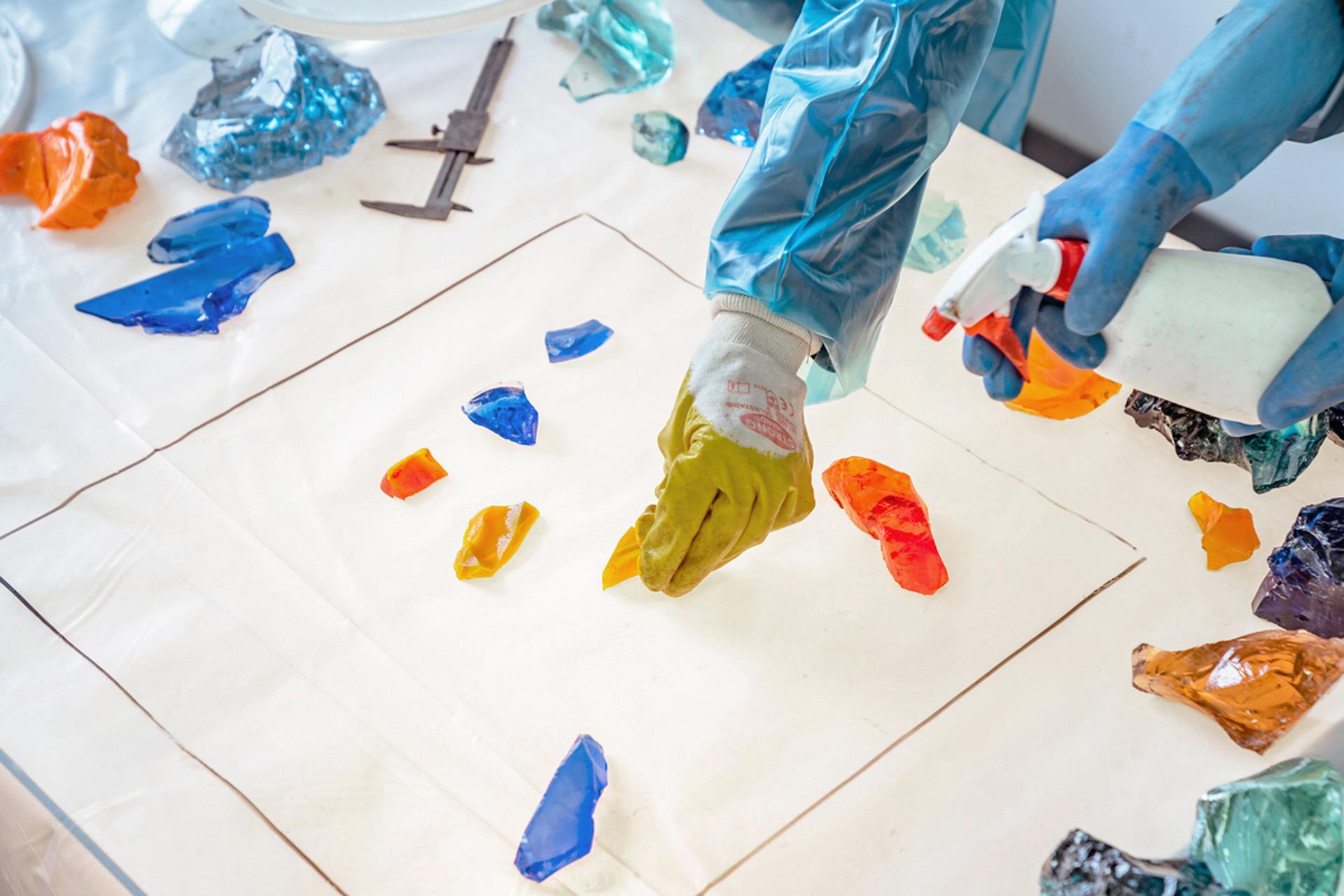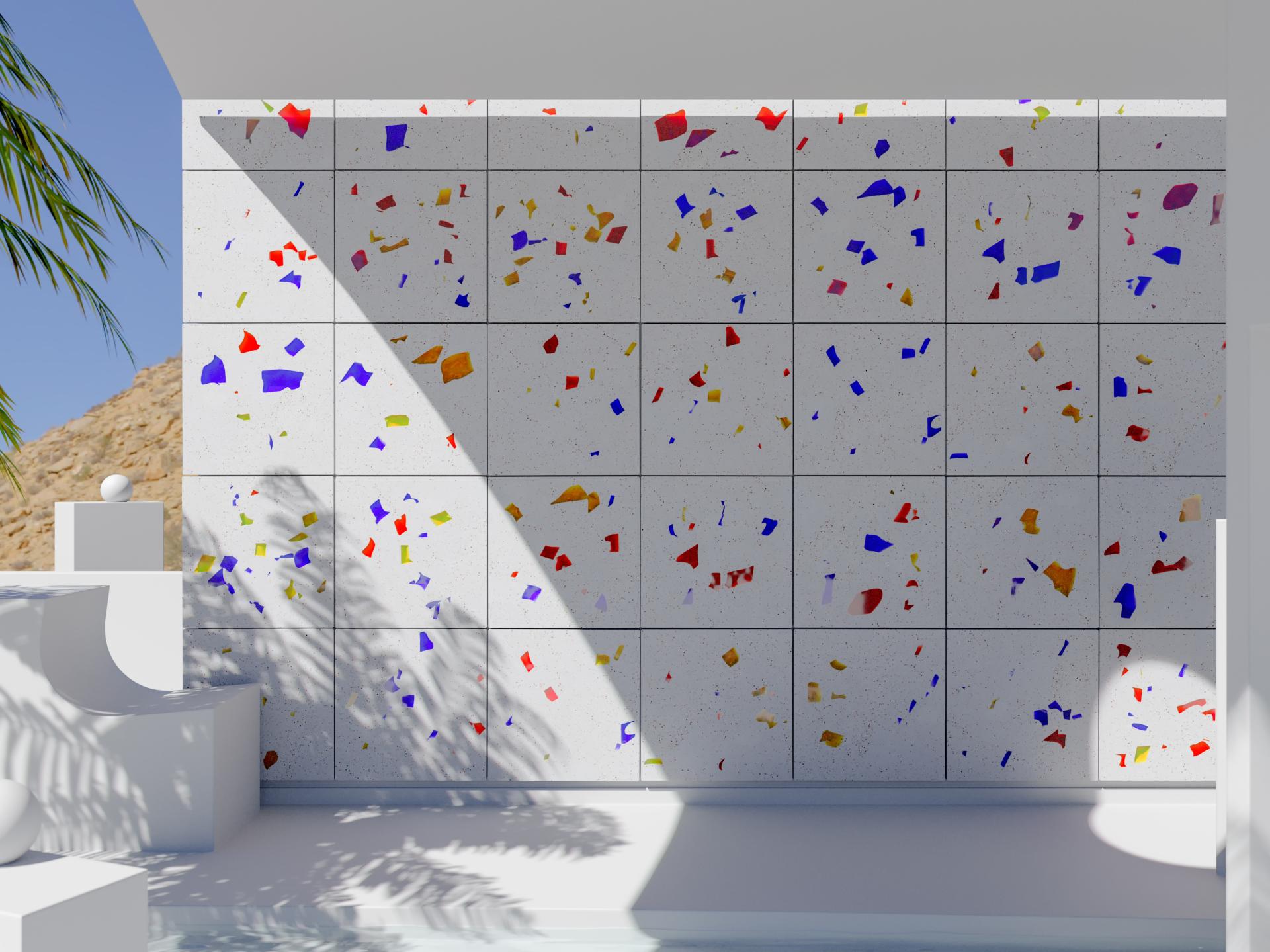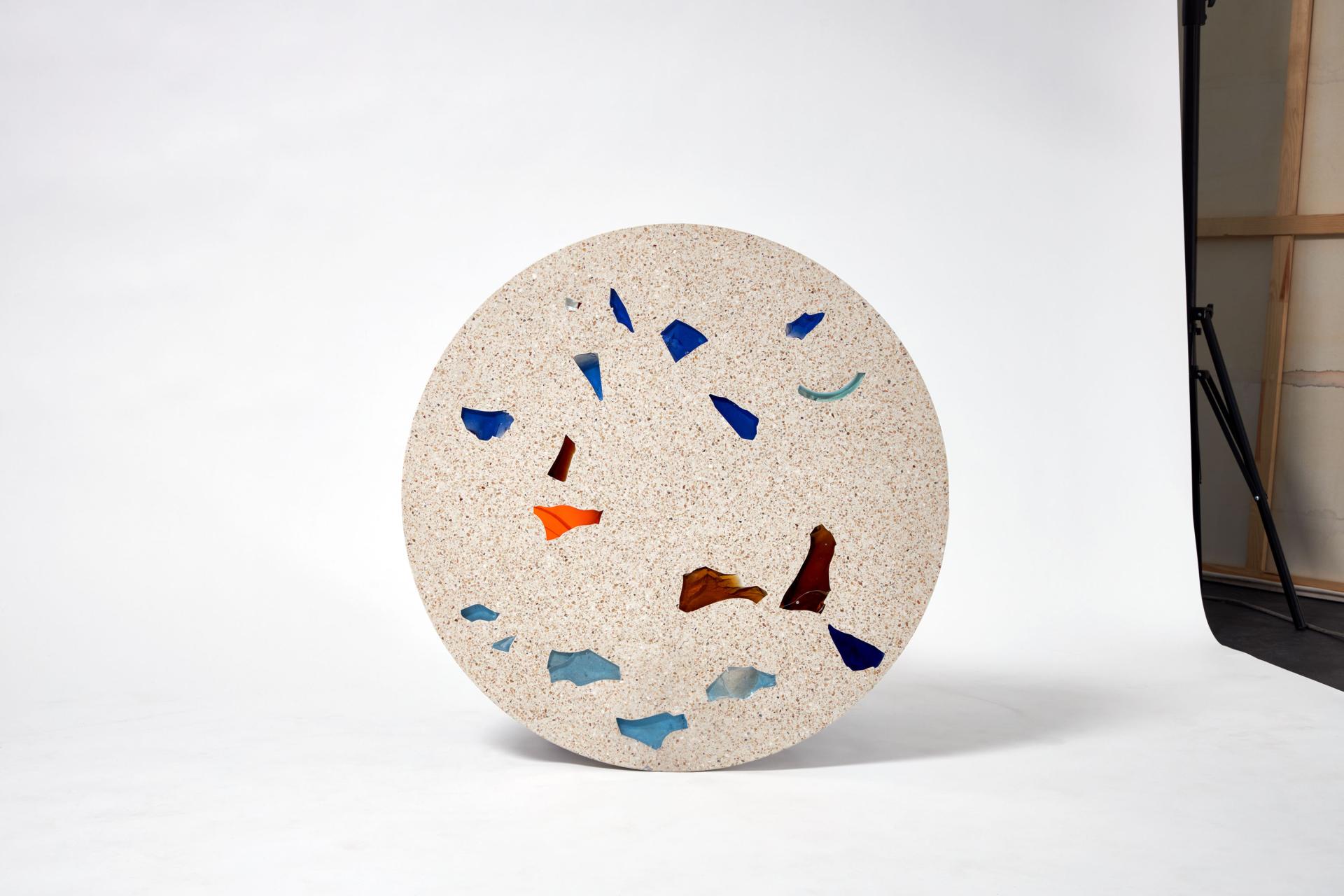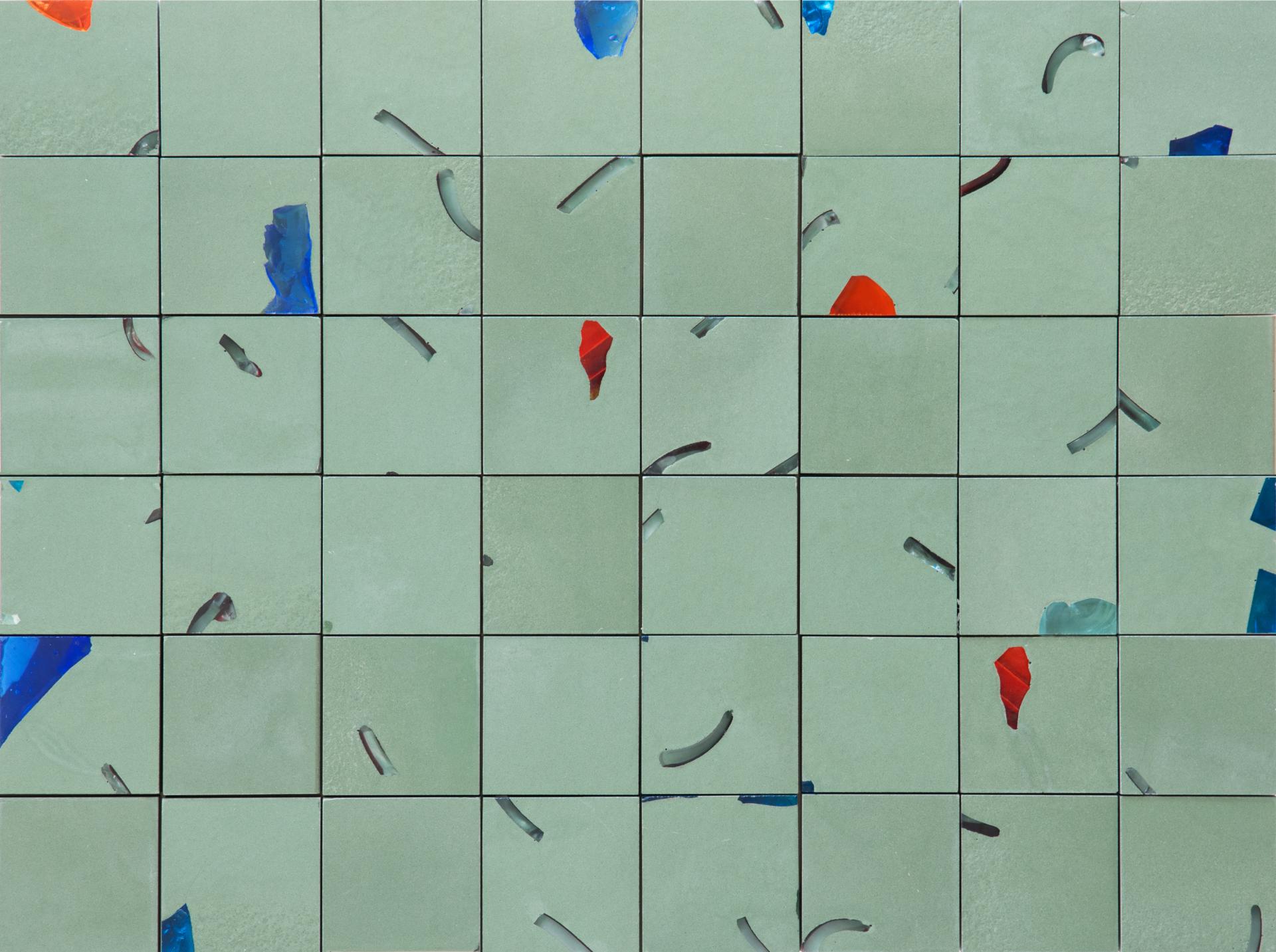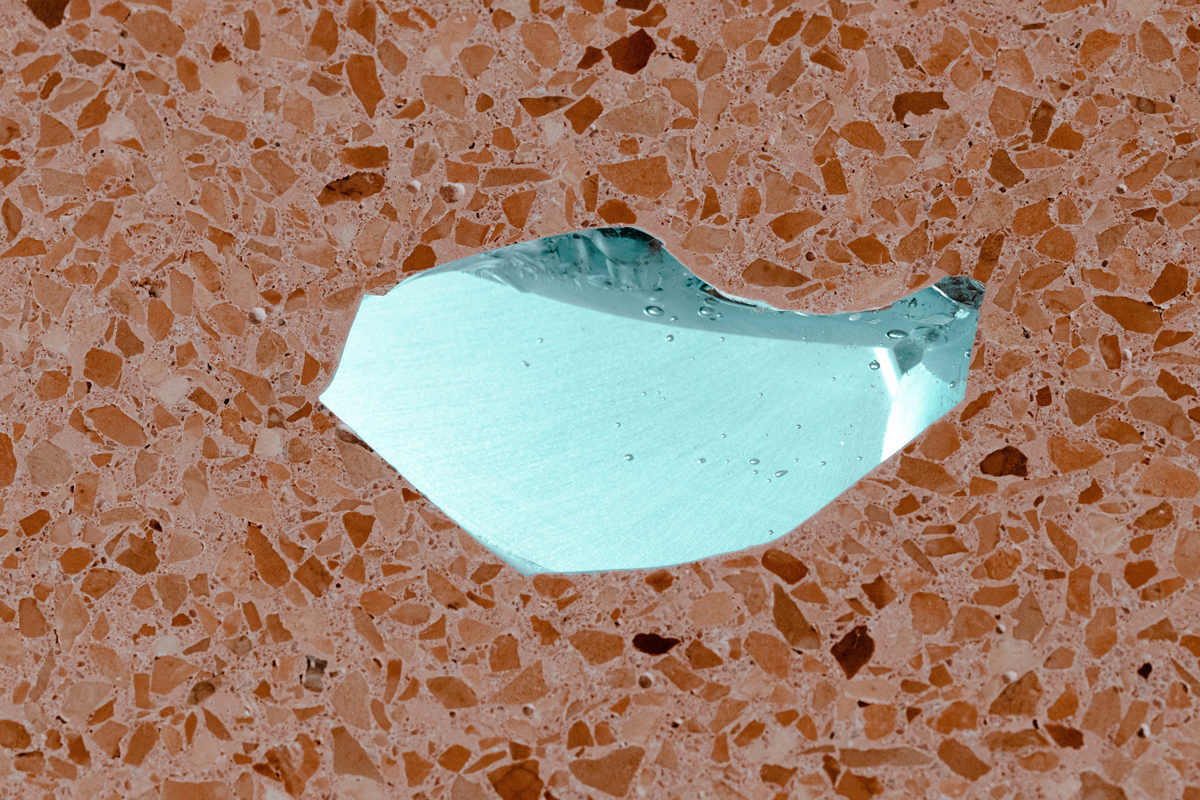BASIS RHO
Basic information
Project Title
Full project title
Category
Project Description
Every day, tons of production waste from art and architecture projects accumulate in European traditional glassworks. This waste is more than just colored raw material - it is shaped by the visions of many cultural creators. These leftovers are true gems. They live on in the first artistic surface material BASIS RHO. BASIS RHO makes it its business to transfer cultural treasures of the past into the present and to make them accessible in the future in a long-lasting and approachable way.
Project Region
EU Programme or fund
Which funds
Other Funds
Berlin Startup Scholarship at the University of Fine Arts Berlin: Creative Prototyping
year: 2019
Germany's Material Award 2020 by raumprobe: awarded 1st prize category design
year: 2020
GründungsBONUS - Funding scholarship for creative or particularly sustainable business models of companies based in Berlin
year: 2020/21
Description of the project
Summary
"We use the glass waste like liquid paint - each chunk of glass becomes a significant mark in our stone canvases!" artist duo Jeschkelanger
BASIS RHO is a cultural hybrid project. It combines the visual arts with architecture and is anchored, as it were, in material research and art history. The developers and artists Anja Langer and Marie Jeschke (together as Jeschkelanger artist duo since 2016 internationally successful) have with their material BASIS RHO more than an aesthetic and innovative concern. It is the inclusive, holistic approach to cultural preservation and transformation that the two have proclaimed in their artistic and theoretical work since the beginning and already convey in seminars and publications.
In 2017, we came across the tons of unique glass waste that German glassworks produce every month. Each glass remnant tells its own complex story of color worlds, artistic ideas, architectural spaces, and ancient glass making craft. This interdisciplinary interface is what led us to save these special remnants, archive them and use them to build our own color palette to 'paint' images into floors and walls.
With each remnant we let the past live on in the future, involve the ideas of other cultural creators in our own, spread the idea of a culture of many with each square meter developed.In order to keep these special glass scraps in circulation for a long time, a concrete block recipe was created with attention to local production partners, regional aggregates and transparent supply chains. After a long research and development phase, BASIS RHO could be lauded as the first artistic building material for floors, walls, objects and entire room interiors in January 2020.
Key objectives for sustainability
To 'paint on' with the art production leftovers of other artists, designers and architects is more than just pure upcycling. Here, a holistic appreciation is given to all creative people on a representative basis. In BASIS RHO, generations join together to form an artistic community. The glass remnants that shape the character of BASIS RHO's artistic material come from art/architecture projects by renowned artists such as Olafur Elliasson, Gerhard Richter or Emi Knöbel, but also from restoration projects for medieval stained glass windows, for example, that were created under the supervision of artists and builders who have already passed away, and from many art in construction, design and architecture projects. BASIS RHO also unites, without hierarchy, the artist's craft, architecture, and the visual arts - it unites disciplines that compete in the present in one physical matter.
It is a long overdue attitude that the artists Jeschkelanger and their work represent - WE ALL ARE CULTURE and the time of egoistic specialism can no longer be supported by society as a whole.
The concept of Circular Economy is at the same time material and aesthetic determination of Basis Rho. The glass scraps of other artists give the concrete matrix its basic structure and serve simultaneously as the artists' thousand-colored painting palette for their stone picture surfaces. This stone material is comparable to natural stone, extremely high quality and durable. Reworked any number of times, it can outlast many generations with its radiant surface. The other components of the concrete are still conventional and are to be replaced by regional, robbery-free alternatives with a better CO2 balance. Currently, the first surrogates for Basis Rho are being tested as part of a joint research project with the Federal Institute for Materials Research and Testing in Berlin.
Key objectives for aesthetics and quality
Each glass remnant is a unique found object. We give it a stage and embed it in a durable material - stone canvases for art / living and living spaces.
The accruing glass waste we can fall back on for BASIS RHO is dyed in up to 5000 colors. Like dots of color, graphic lines and colored surfaces, the glass chunks unfold their painterly qualities embedded in robust stone workstones. The glass color spots also open up an unprecedented insight into surfaces. Like mismatched windows or oversized colored pores, the glass chunks reveal the view.
BASIS RHO thus has two aesthetic qualities - on the one hand, the overall painterly effect in the surfaces and, on the other, captivating details - peepholes into works of art, tabletops, floors and walls.
Like prisms, the integrated glass fragments penetrate the surfaces and enable a world of experience all their own. The view of the surfaces that constantly surround us in everyday life is not blocked as usual. It is allowed to penetrate, to penetrate and to look behind. This visual perforation of the surface slows down time - reminds us of nature experiences and removes spatial boundaries.
For each project that is created with BASIS RHO, an individual selection of glass pieces is made. Each found piece is selected for color, shape and size to fit the project.
This careful selection leads to the fact that with artistic care a completely own picture language can develop - suitably the Verbauungsort and concept. Since BASIS RHO is created in a manufacturing process, it is possible to respond individually in an aesthetic way, unlike with classic material manufacturers - so every square centimeter that is created is already of artistic value.
Since BASIS RHO is art that can be built on, the material can also be touched, walked on and used. This functionally artistic approach also breaks down the usual boundaries between art and application and enables a much larger radius of experience.
Key objectives for inclusion
The initial spark for the development of BASIS RHO came from the irregular, multicolor heterogeneous glass remnants. No two remnants are alike. These characteristic glass fragments embody for us an inclusive basic attitude for a social togetherness. Each remnant is worth to be included, with all the others it forms a diverse unit.
As the development process progressed, it became apparent that we needed to approach non-art professionals in order to achieve a long-lasting, robust formula. Thus began an interdisciplinary, networking collaboration with stone, concrete and glass specialists, architects, designers, but also clients from the hotel, retail and other sectors.
We can also observe a very strong heterogeneity among interested parties, customers and collectors. Since we design our material in a scalable way, it is already available in a small area and thus accessible to many people. BASIS RHO has a very high aesthetic quality - it can be directly experienced by everyone. It does not require background knowledge, language or an understanding of complex interrelationships. BASIS RHO can be experienced directly and very low-threshold by very many people. In exhibitions we could observe that children (even toddlers) move purposefully towards the BASIS RHO surfaces and touch and look at them directly.
Results in relation to category
In the visual arts, too, it is unavoidable to conceive, produce, and present in cycles. Artists should be aware of their responsibility that even the materials they need and use to produce their artworks are often neither sustainably obtained nor produced. Until now, artworks have not been evaluated or interpreted from this perspective. It is time for art to also broaden its field of vision and act in a more holistic way. The development and use of BASIS RHO demonstrates this holistic approach. As a pioneering project, it can inspire other art and culture makers and sensitize them to their own materials, their origins and sourcing. This is not only true for the artists themselves; the major museums, galleries and exhibition venues and their staff must also be sensitized to holistic art-making. Only in this way can they continue to fulfill their mediating mission for future generations.
Every piece of glass that becomes part of our color palette is unique. In our BASIS RHO color palette, each color and shape exists only once. In times of convenience food, standardized RAL color shades and mass products, a general understanding of norms has been established in society that irregularities and deviations from the norm are expelled from cycles and devalued. The project BASIS RHO enables a shift and opening of normative values. This inclusive basic idea could already be communicated in many places in Europe and worldwide in exhibitions, fairs, symposia, seminars and workshops.
With BASIS RHO as an interdisciplinary project, a large number of people can be reached. The hybrid art material has been used, for example
2020) at the Surface Design Show in London, at Direktorenhaus - Museum für Design&Handwerk in Berlin, in a contemporary art exhibition in Munich
2021) in a showroom for 'functional art' in Bruxelles and in private homes and restaurants.
BASIS RHO is thus an art and culture mediating work that can be anticipated without prior artistic education.
How Citizens benefit
Basis Rho is created and aesthetically designed by the artists Jeschkelanger. At the same time, it is a raw material for diverse applications and invites interdisciplinary collaborations: since 2019, surfaces and objects made of Basis Rho - which can even be touchable and functional - have been developed for public areas in collaboration with architects, interior designers and builders.
In 2020, designs for stone image surfaces made of Basis Rho were among the finalists for the new building of the Federal Ministry of the Interior in Berlin and the State Investigation Office in Koblenz.
For the Federal Ministry of the Interior, 680 sqm of floor surface had been designed and for Koblenz, a room divider for the lobby. A submission for functional outdoor sculptures for the German Embassy in Vienna is in preparation.
For the Fotografiska Museum currently under construction at the legendary former Tacheles Berlin, the restaurant's table surfaces are planned as stone paintings made of BASIS RHO. Art objects and an installation made of BASIS RHO can currently be seen at Gallery Rettberg in Munich in the exhibition We melt before it forms. This exhibition is comprehensively dedicated to the theme of remnants and memory and is curated by Joseph Constable (Serpentine Galleries, London) - BASIS RHO as a functional material is presented to visitors here for the first time as abstract, touchable painting.
Since 2020, there has been cooperation with the Federal Institute for Materials and Space Research. The ingredients of concrete are to be replaced with regional, robbery-free means. The first research results and artworks from Basis Rho will be on display at the Long Night of Science in 2022.
The artists also convey experiences and backgrounds to BASIS RHO, so far in seminars at the University of Fine Art Berlin, the Art University Nancy (France) and Singapore Art University. A contribution for a publication of the UdK Berlin is currently being edited.
Innovative character
The innovation of BASIS RHO consists of the combination of artistic work and traditional as well as modern craft technologies. These together result in the unique BASIS RHO manufacturing process: a specially developed concrete formula with glass stones placed in it precisely by the artist duo Jeschkelanger - which themselves are remnants of other artists and their projects. These remnants of art become the raw material, which are transformed into new art in a unique circulation process.
In order for BASIS RHO to be producible at all, new craft as well as artistic processes had to be developed by Jeschkelanger:
On the one hand, a specific concrete recipe had to be worked out that allows the bonding of glass and concrete. This formula was developed by the artists themselves and consists of a specific type of cement, gravel aggregates and limestone powder, which must be mixed in a precisely determined ratio. This formula was developed by the artists themselves
This recipe was developed by the artists themselves and consists of a specific type of cement, gravel aggregates and limestone powder, which must be mixed with water in a precisely determined ratio. Another important challenge was to find a method that would allow the exact positioning of the stones in the overall surface and their light transmission from the front to the back. To do this, the large, chunky glass remnants had to be cut into slices. However, there was no technical possibility for this at the beginning. Jeschkelanger was able to develop its own saw for this purpose.
Basis Rho is thus an innovative work of art with a sustainable background and can be used as a surface material to create unique surfaces in any interior or exterior space.
The many, artistically placed glass stones, as pointillistic groups of shapes of each Basis Rho image, convey the inclusive character of the material.

